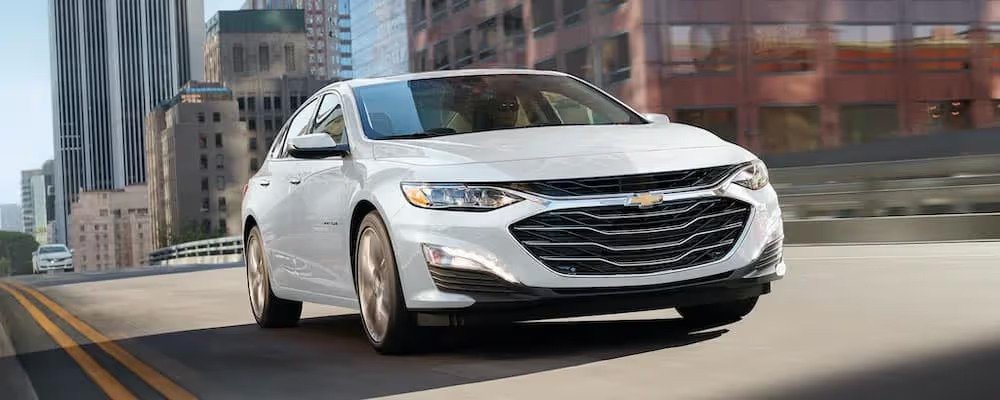For many drivers, especially those spending significant time behind the wheel, the layout and positioning of a car’s pedals can make or break the overall driving experience.
While steering feel, seat comfort, and visibility often get the spotlight, the ergonomics of the brake pedal—particularly its proximity to the accelerator—play a critical yet underrated role in driving safety and fatigue.
In some sedans, poor pedal spacing can lead to inadvertent inputs, discomfort on longer drives, and even unsafe conditions for those with broader footwear or larger feet.
This article highlights two sides of the pedal design spectrum. First, we’ll examine five sedans where the brake pedal is placed too close to the accelerator, creating issues with footroom, misapplication risk, and general drivability.
These vehicles often force drivers into awkward foot angles or cramped postures that detract from an otherwise well-engineered cabin.
Then, we’ll pivot to five sedans that absolutely nail the pedal layout. In these models, the brake and accelerator are spaced perfectly to ensure natural foot movement, precise control, and driving confidence—whether you’re navigating city traffic or enjoying a long highway cruise.
From design missteps to ergonomic triumphs, these sedans tell the full story of how a few inches can make a big difference.
Also Read: 5 Cars With Factory Batteries That Last 6+ years and 5 That Don’t Make 3
5 Sedans With Brake Pedals Placed Too Close
When discussing ergonomics in car design, attention often gravitates toward seat adjustability, visibility, and infotainment placement. However, one of the most fundamental interfaces between driver and vehicle—the brake pedal—rarely gets the scrutiny it deserves.
In many sedans, the positioning of the brake pedal relative to the accelerator and the driver’s footwell space can have a profound impact on driving safety and comfort.
Unfortunately, a number of otherwise well-regarded sedans suffer from poorly spaced pedal layouts that place the brake pedal too close to the accelerator.
The most immediate problem caused by a tightly spaced pedal setup is the increased likelihood of accidental inputs.
In situations requiring rapid reaction—such as stop-and-go traffic or evasive maneuvers—a cramped layout can lead to unintentional throttle blips or delayed braking.
Additionally, drivers wearing wider shoes or boots may find their footwear brushing both pedals, making it difficult to confidently control the car. Over time, this can cause fatigue and hesitation, especially during long commutes or highway driving.
These design flaws often stem from efforts to create a compact cockpit feel or accommodate other cabin components, but the result is a compromise in functionality.
It’s not just taller drivers or performance enthusiasts who notice these issues—everyday drivers can feel the effects of poor pedal ergonomics in the form of discomfort, uncertainty, and reduced control. In this section, we’ll spotlight five sedans where the brake pedal is simply placed too close for comfort.
Each of these cars brings its own strengths to the table—be it luxury, performance, or value—but they all share a frustrating oversight in pedal design that affects the overall driving experience.
Whether you’re a daily commuter or weekend road tripper, these are layouts you’ll want to experience for yourself before signing on the dotted line.
1. Toyota Camry (2023)
The Toyota Camry has long been hailed as one of the most reliable and practical midsize sedans on the market. It boasts a refined ride, solid fuel economy, and impressive resale value, making it a favorite for both families and commuters.
However, one surprising drawback that consistently crops up in driver feedback is the placement of its brake pedal—especially in the 2023 model. While the overall cabin is thoughtfully laid out, the footwell area tells a different story.
In the Camry, the brake pedal sits unusually close to the accelerator. This can make it difficult for drivers to modulate between gas and brake smoothly, particularly in low-speed, stop-and-go traffic.
The tight spacing is further complicated by the angle at which the pedals are mounted, which can make it challenging for drivers to rest their foot naturally.
Taller individuals or those wearing wider footwear—such as work boots or even casual sneakers—may find themselves brushing the accelerator when intending to brake, or vice versa.
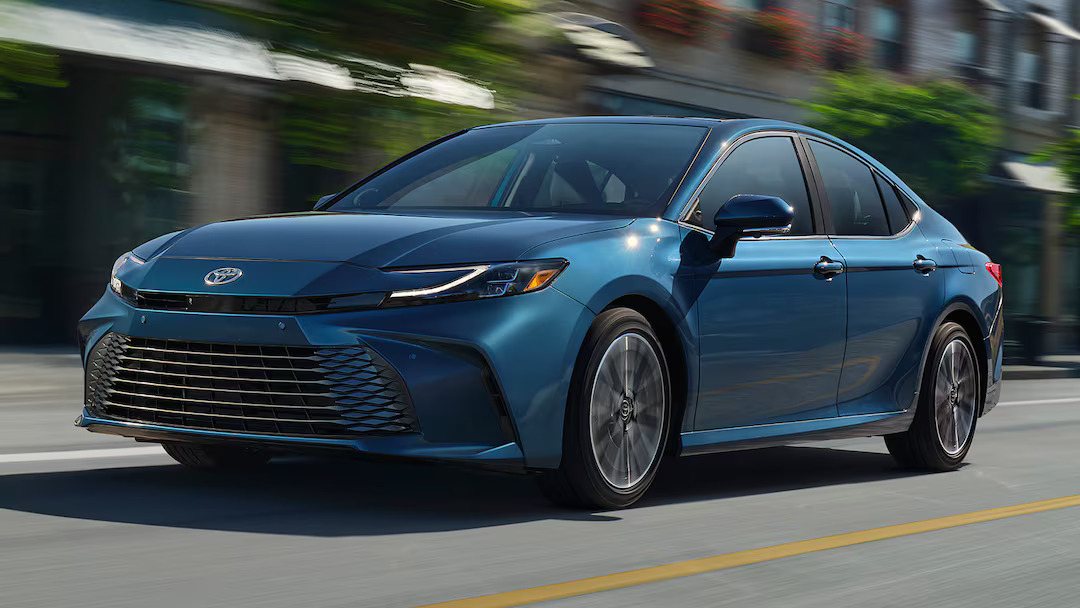
This issue becomes even more noticeable during longer trips. Fatigue can set in from having to maintain constant vigilance about foot placement, which is ironic given the Camry’s reputation as a comfortable cruiser.
Furthermore, the lack of a dead pedal (or its awkward position) forces the driver’s left leg into an unnatural posture, which can contribute to hip and lower back discomfort over time.
Interestingly, Toyota has equipped the Camry with advanced driver aids such as adaptive cruise control and collision mitigation braking.
These features may give the impression that braking ergonomics are less critical, but in reality, they can’t compensate for awkward physical control placement when manual intervention is needed.
While the Camry remains a strong all-around sedan, its pedal spacing is a rare oversight in an otherwise well-rounded design.
Prospective buyers should spend a few minutes in the driver’s seat with their foot on each pedal before committing—especially if they plan on doing a lot of urban driving or long-distance cruising. It’s a small detail that could become a daily annoyance.
2. Mazda6 (2021)
Praised for its sharp handling, premium interior materials, and sleek exterior styling, the Mazda6 earned a loyal following among drivers looking for an engaging midsize sedan without stepping into luxury pricing.
However, despite its near-luxury ambitions and driver-focused ethos, the 2021 Mazda6 suffers from a surprisingly tight pedal box—particularly when it comes to brake pedal spacing.
In this sedan, the brake pedal sits unusually close to both the accelerator and the side of the center console, creating a cramped footwell that makes fluid pedal transitions more difficult than they should be. The problem becomes immediately noticeable when wearing anything bulkier than narrow dress shoes.
Drivers with wider feet or larger shoe sizes often report that they unintentionally graze the gas pedal while braking or vice versa. This issue is compounded during spirited driving or emergency stops where quick, precise movements are essential.
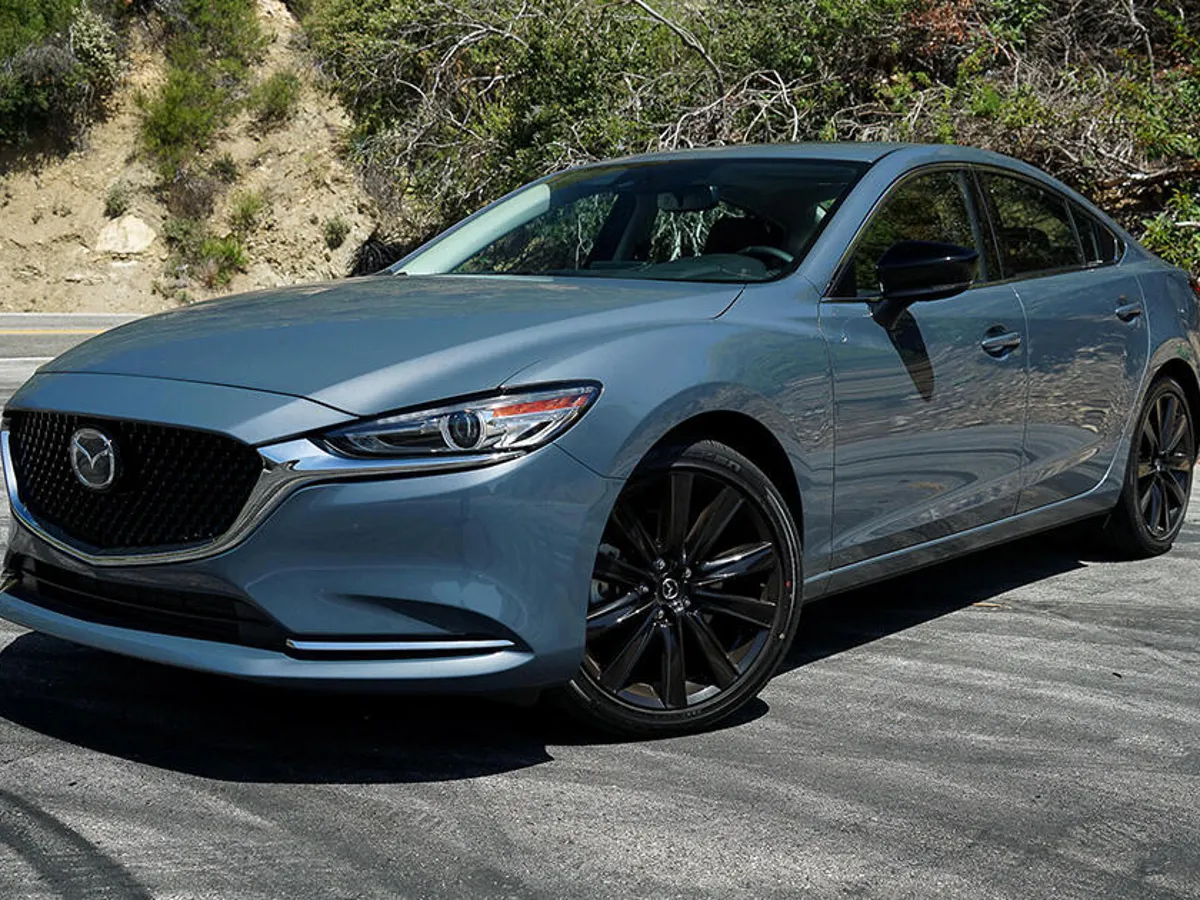
The cramped spacing seems to contradict Mazda’s “Jinba Ittai” design philosophy, which emphasizes unity between car and driver.
While steering feel and chassis balance are undeniably excellent, the pedal placement breaks the sense of seamless control.
In some models, even the accelerator pedal is floor-hinged in a manner that leaves little room for subtle ankle articulation—adding another layer of complexity when trying to finesse braking and throttle inputs.
Moreover, the presence of a protruding transmission tunnel narrows the available space for foot movement, especially on the right side. This forces many drivers into a slightly twisted leg posture that can cause discomfort over time, particularly on long drives.
What’s puzzling is that Mazda clearly intended the 6 to cater to drivers who value dynamics. And yet, this ergonomic misstep hinders the otherwise fluid experience.
Whether you’re executing a quick merge or inching through heavy traffic, the poorly spaced pedals introduce an unnecessary distraction—something no car that claims to be “driver-centric” should do.
As the Mazda6 bows out of the U.S. market after 2021, its pedal layout stands as a small but telling reminder of how even good design can be undermined by a lack of ergonomic finesse. It’s a case where form slightly edged out function in a crucial area of the cabin.
3. Chevrolet Malibu (2022)
The Chevrolet Malibu is one of the last remaining domestic midsize sedans, offering a quiet ride, spacious rear seats, and respectable fuel economy.
While it checks many of the practical boxes that appeal to daily commuters and budget-conscious families, the 2022 Malibu reveals an often-overlooked ergonomic flaw: a brake pedal positioned too close to the accelerator, creating a less-than-ideal foot interface for the driver.
At first glance, the Malibu’s interior layout appears clean and conventional. However, once seated behind the wheel, many drivers notice that the brake pedal sits at an awkward proximity to the accelerator, especially toward the bottom end.
The overlap between the two pedals is subtle but problematic, leading to potential foot placement confusion. This is especially true in shoes with a broader footprint or during instances requiring rapid braking from moderate speed, where precise foot control is essential.
This tight pedal spacing is particularly jarring given that the Malibu is not a compact car. There’s ample cabin space, and yet the footwell feels oddly constricted—likely a byproduct of GM’s platform design constraints shared with other vehicles.
The slope of the floorboard doesn’t help either, as it angles the driver’s feet in such a way that encourages the right foot to sit slightly off-center, brushing against both pedals.
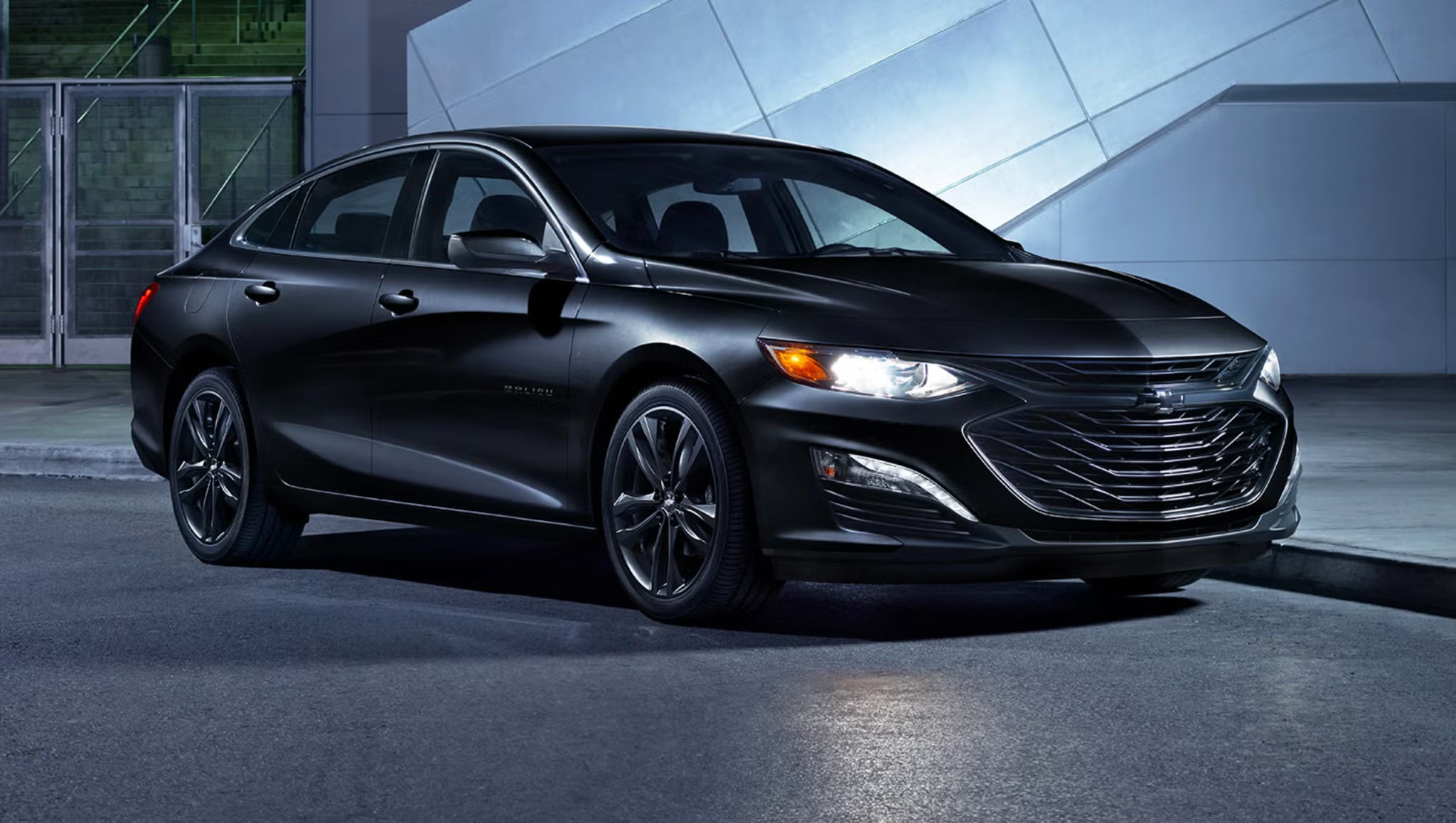
In practice, this configuration can increase driver fatigue, especially on long highway trips where frequent speed adjustments are necessary.
In urban driving, where drivers constantly transition between gas and brake, it may even lead to hesitation or misapplication—a situation that undermines confidence behind the wheel.
Interestingly, the Malibu is often chosen by rental fleets and older drivers who prioritize comfort and familiarity. But for these very drivers—many of whom may already have slower reaction times or mobility concerns—a cramped pedal layout only adds to the risk factor. The design falls short of ensuring intuitive, stress-free operation.
Though the Malibu offers solid value, the pedal spacing is a misstep that detracts from the overall user experience.
It may not be a dealbreaker for everyone, but those who spend hours commuting or frequently encounter stop-and-go traffic will notice it—and they may find themselves wishing for a few extra inches of clearance where it matters most.
4. Subaru Legacy (2022)
The Subaru Legacy is a sedan that wears many hats—it’s practical, all-wheel drive-equipped, and rich in safety features. For buyers in regions with unpredictable weather or light off-road needs, the Legacy often feels like a safe, no-nonsense choice.
However, the 2022 model harbors a design flaw that’s surprising in a brand so focused on function: its brake pedal is positioned too close to the accelerator, leading to discomfort and control challenges that undercut the car’s otherwise thoughtful engineering.
Drivers stepping into the Legacy expecting a well-optimized cockpit may be disappointed when they realize just how cramped the footwell feels. The brake pedal sits unusually near the gas pedal, and more troublingly, it is also set high relative to the floor.
This combination creates an awkward angle of operation. During daily driving, the foot must pivot in a tight, upward arc, forcing the driver into exaggerated movements that feel anything but natural—especially during heavy braking or quick transitions.
This layout becomes a concern in winter conditions, where drivers may be wearing bulkier footwear. Subaru owners in snowbelt regions regularly complain about the difficulty of controlling pedal inputs while wearing boots.
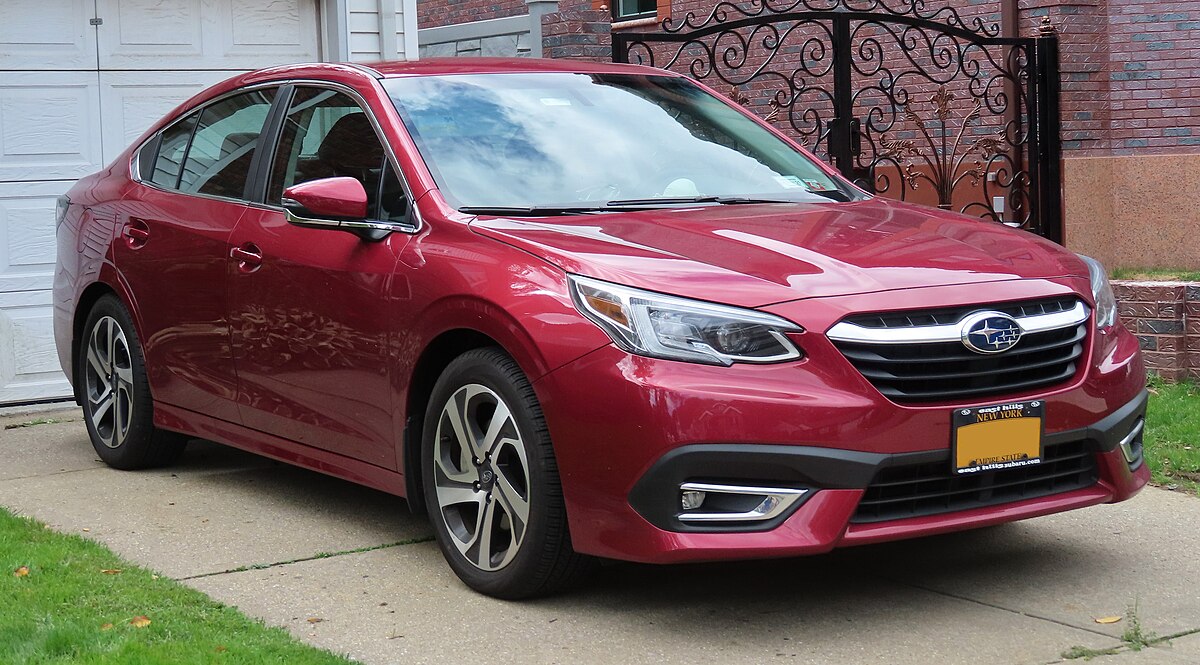
The proximity between the two pedals increases the risk of unintended throttle input while attempting to brake—ironically in a car that’s marketed for safety and control.
Furthermore, Subaru’s symmetrical all-wheel-drive system, while beneficial for handling, eats into underfloor space in ways that seem to have affected pedal placement.
The driveshaft tunnel and firewall design restrict the available layout options, leading to a trade-off that hits the driver directly.
It’s not uncommon for taller drivers or those with longer legs to feel confined or forced to adjust their seating position unnaturally just to achieve better pedal alignment.
This ergonomic misstep is disappointing given the Legacy’s otherwise commendable attention to driver assistance and crash protection.
Subaru’s EyeSight system may help in many situations, but it doesn’t replace the need for responsive, confident braking—something made harder by an uncomfortable physical layout.
In a sedan that prides itself on year-round usability and comfort, the pedal spacing feels like an afterthought. Subaru would do well to reevaluate this setup in future generations if it wants to maintain its reputation for driver-first engineering.
5. Volkswagen Passat (2022)
The Volkswagen Passat, once a strong contender in the midsize sedan market, saw its U.S. run come to a close with the 2022 model year.
Known for its spacious cabin and refined ride quality, the Passat delivered a solid, no-nonsense driving experience aimed at comfort and practicality.
However, one enduring issue that persisted even into its final iteration was the suboptimal placement of its brake pedal—positioned too closely to the accelerator for comfort and confident control.
In typical VW fashion, the Passat’s cabin feels tightly put together and restrained in design. But when it comes to pedal spacing, the driver is left with an arrangement that feels more European in its compactness than American in spaciousness.
The brake pedal is not only close to the accelerator laterally but also somewhat elevated, creating a situation where moving the foot between pedals requires a pronounced lift and lateral shift.
This setup becomes especially problematic in daily driving scenarios where frequent modulation is needed—like stop-and-go traffic or hilly urban streets. Drivers report having to adjust their leg position repeatedly to avoid brushing the throttle when braking.

For those with wide feet or those wearing athletic or casual shoes, the overlap in pedal territory feels excessive. Missteps may not be common, but the need for constant awareness becomes mentally tiring.
The issue is exacerbated by the Passat’s generally low seating position and flat floor, which leave little room for ankle articulation.
Some drivers compensate by adjusting the seat farther back, which then makes pedal reach less natural—introducing another ergonomic compromise. It’s a frustrating loop: you can’t quite fix the pedal problem without creating a new one in posture or reach.
Volkswagen’s final U.S.-market Passat was a swan song that tried to appeal to loyalists with commemorative trims and added features, but the basic driving interface remained unchanged.
Unfortunately, this includes the cramped pedal configuration that contradicts the car’s otherwise roomy and comfort-focused nature.
For a sedan marketed to commuters and mature drivers, a well-thought-out footwell is essential. In the case of the 2022 Passat, the cramped pedal spacing is a disappointing oversight that stands out in an otherwise easygoing and agreeable vehicle.
5 Sedans That Nail the Layout
While poor pedal placement can sour the driving experience, a well-designed pedal layout can elevate even an average car into a pleasure to drive.
In sedans that get it right, the brake and accelerator are positioned with thoughtful attention to human ergonomics, allowing for smooth transitions, intuitive control, and reduced fatigue.
This is especially vital in vehicles meant for daily commuting or long-distance cruising—contexts where comfort and confidence behind the wheel aren’t just luxuries, but necessities.
A great pedal layout isn’t about flash or high-tech gimmicks. Instead, it comes down to fundamental principles: adequate spacing between the brake and accelerator, consistent pedal height, a natural angle of foot engagement, and ample footwell room.
These elements combine to create an interface that feels like an extension of the driver’s own body. Whether you’re navigating through city traffic, gliding down the highway, or dealing with unexpected road hazards, well-placed pedals offer the kind of precision and responsiveness that builds trust between driver and machine.
Manufacturers that nail this detail often share a driver-centric design philosophy, where physical comfort and mechanical connection are given equal priority.
In this section, we’ll spotlight five sedans that exemplify this philosophy through outstanding pedal ergonomics. These vehicles aren’t just well-tuned under the hood—they’re calibrated where it counts most: at the driver’s feet.
Each one offers a footwell design that balances space, angle, and control, allowing drivers of varying sizes and footwear to enjoy a consistent and fatigue-free experience behind the wheel.
If you’ve ever driven a car and thought, “this just feels right,” chances are, it had a layout like the ones we’re about to highlight.
1. Honda Accord (2023)
The Honda Accord has long been a benchmark in the midsize sedan segment, and the 2023 model continues to impress with its balance of practicality, performance, and driver comfort.
One of the often-overlooked strengths of the Accord lies in its pedal layout, which exemplifies how careful engineering can transform a simple mechanical interface into a seamless extension of the driver’s intent.
Step into the Accord’s driver’s seat and one of the first things you’ll notice—whether consciously or subconsciously—is how naturally your right foot aligns with the accelerator and brake.
The pedals are spaced just far enough apart to prevent accidental overlap, yet close enough for quick transitions in stop-and-go conditions. The height and depth of both pedals are also nearly ideal, reducing ankle strain and allowing for a fluid foot pivot between inputs.

This is especially noticeable in models equipped with Honda’s turbocharged engine, where smoother throttle modulation enhances both performance and efficiency.
Honda’s commitment to ergonomic design is evident in how the pedals interact with the broader cabin. The footwell offers plenty of space, avoiding the cramped, sloped feeling found in many competitors.
There’s a substantial dead pedal for the left foot, allowing drivers to brace comfortably and maintain posture on longer drives.
Even taller individuals, who might typically feel confined in some midsize sedans, will appreciate the Accord’s generous legroom and how it complements the pedal configuration.
Another critical element that sets the Accord apart is consistency across trims. Whether you’re driving the base LX or the top-tier Touring Hybrid, the pedal layout remains consistent, avoiding the kind of packaging compromises that can arise in multi-powertrain lineups. This uniformity means buyers don’t have to trade off ergonomics for technology or efficiency.
Additionally, the driving position itself is highly adjustable, allowing drivers of all sizes to find the sweet spot where their feet, hands, and sightlines align. This versatility ensures that the excellent pedal placement isn’t wasted on only a narrow subset of drivers.
In sum, the 2023 Honda Accord offers one of the most intuitive, fatigue-free driving experiences in the segment—and it starts at your feet. It’s a quiet triumph of design that reinforces the Accord’s status as a sedan built with the driver truly in mind.
2. Hyundai Sonata (2023)
The Hyundai Sonata has rapidly evolved into one of the most compelling midsize sedans, combining modern styling, advanced tech, and a driver-centric interior.
One of its standout features is the well-executed pedal layout, which makes it a pleasure to drive whether in congested city streets or on the open highway.
Upon entering the Sonata, the driver is greeted with a spacious footwell that emphasizes comfort and intuitive control. The brake and accelerator pedals are thoughtfully spaced to allow precise foot placement without feeling cramped or excessively wide apart.
This spacing supports quick pedal transitions, crucial for smooth stop-and-go traffic navigation and confident acceleration out of corners.
Hyundai has also ensured the pedals sit at ergonomically favorable heights, reducing strain on the ankle and minimizing fatigue during long drives.
The brake pedal offers firm, responsive feedback, encouraging smooth braking without any sponginess or excessive travel.
Meanwhile, the accelerator pedal is positioned to provide natural throttle modulation with a linear response curve, making it easy to control speed increments gently.
The Sonata’s pedal box benefits from a flat and roomy floor design, which enhances leg comfort and foot mobility. The presence of a supportive dead pedal for the left foot allows drivers to maintain a stable and relaxed posture over extended periods.
This thoughtful inclusion is especially appreciated during highway cruising or long commutes.
Additionally, the Sonata offers extensive seat adjustability, ensuring drivers of all heights and builds can find an ideal seating position that complements the pedal layout. Whether wearing sneakers, boots, or dress shoes, foot positioning remains secure and consistent.
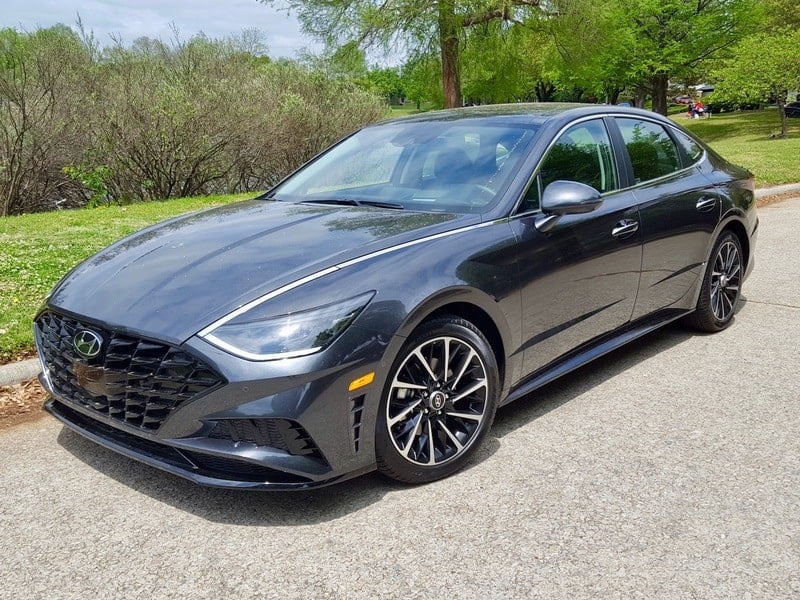
In a segment crowded with competitors, the 2023 Hyundai Sonata stands out by balancing style, technology, and ergonomics. Its pedal placement is a testament to Hyundai’s focus on driver comfort and usability, making it a top choice for those who value both form and function.
3. Kia K5 (2023)
The Kia K5, Kia’s stylish and sporty midsize sedan, has quickly gained popularity for its bold design and engaging driving dynamics.
Beyond aesthetics and performance, the K5 impresses with its driver-focused interior, especially the ergonomics of its pedal layout, which plays a significant role in delivering a confident and comfortable driving experience.
In the K5, pedal spacing is carefully calibrated to provide ample room between the brake and accelerator, preventing accidental foot overlaps while allowing for rapid transitions during heavy traffic or spirited driving.
The pedals are positioned to facilitate natural foot movement, with a gentle angle that reduces ankle strain and encourages smooth modulation.
What sets the K5 apart is the attention paid to pedal height consistency. Both the brake and accelerator sit at a level that makes foot pivots effortless, enhancing control during sudden stops or gradual acceleration. This layout is especially beneficial during city driving, where quick reflexes and precise throttle inputs are crucial.
The pedal box itself is complemented by a spacious footwell design, free from intrusive transmission tunnels or sharp floorboard angles that can hinder foot placement.
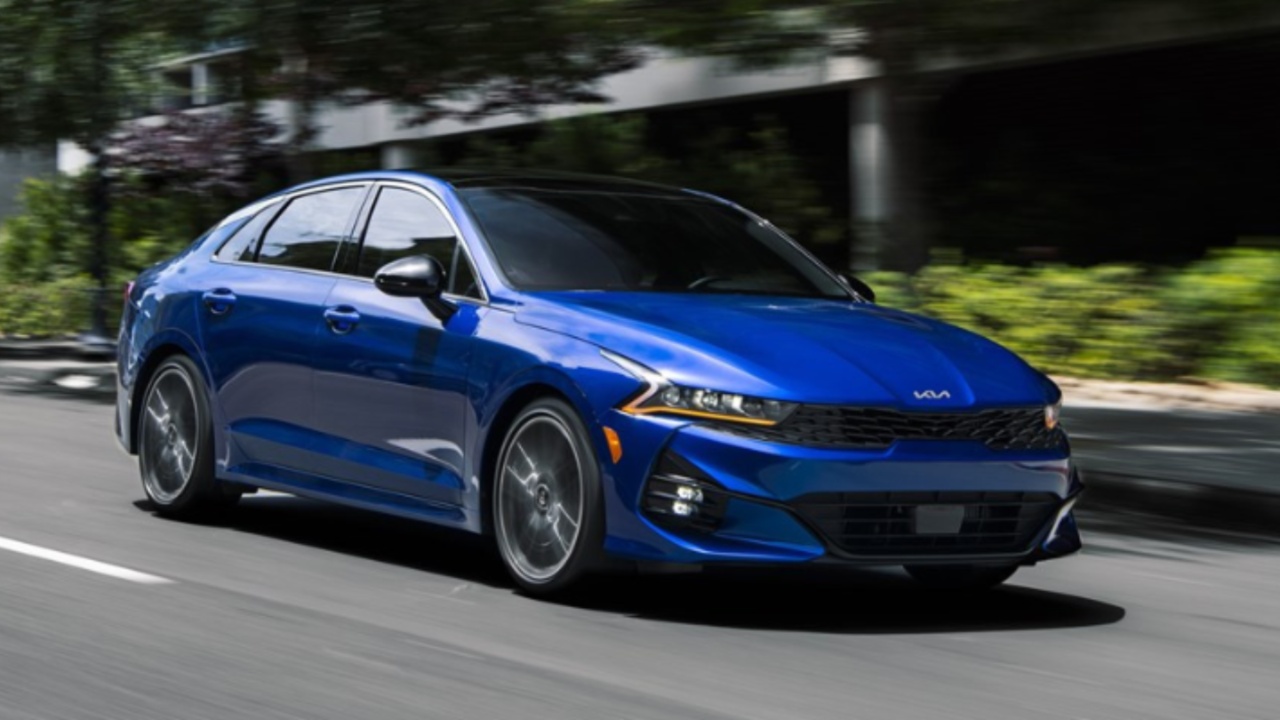
Additionally, the inclusion of a well-sized dead pedal provides a comfortable resting spot for the left foot, promoting a balanced and relaxed driving posture on longer journeys.
Kia’s seat adjustability features also contribute to optimizing pedal reach, ensuring drivers of varying sizes can find an ergonomic seating position that aligns perfectly with the pedals. This adaptability enhances overall comfort and control.
Importantly, the K5 maintains this excellent pedal layout across its trim levels and powertrain options, from the efficient base engine to the turbocharged GT variant. Drivers don’t have to compromise ergonomics for performance or style.
In sum, the 2023 Kia K5 nails the fundamentals of pedal placement, blending comfort, control, and driver engagement. It’s a midsize sedan designed not just to look good, but to feel right beneath the driver’s feet.
4. Genesis G70 (2023)
The Genesis G70 stands out in the luxury compact sedan segment with its combination of sharp handling, upscale interior, and thoughtful driver ergonomics.
A key component of the G70’s driver-centric design is its pedal layout, which exemplifies how premium vehicles can blend style with function to create a truly engaging driving experience.
In the G70, the brake and accelerator pedals are positioned with deliberate precision. The lateral spacing is generous enough to prevent accidental pedal overlap, yet close enough to allow swift transitions—a crucial factor during spirited driving or dense traffic conditions.
The pedals also feature a balanced height relationship, minimizing ankle strain and enabling natural foot pivots.
Beyond spacing, Genesis focuses on pedal feel and feedback. The brake pedal delivers a solid, progressive resistance that inspires confidence, while the accelerator pedal responds smoothly to input with excellent modulation.
This level of tactile communication enhances driver control and responsiveness, making each drive feel more connected and intuitive.
The footwell area in the G70 is thoughtfully designed with ample room and a supportive dead pedal on the left, encouraging a comfortable and stable driving posture. This is especially valuable during long drives or spirited weekend runs where driver fatigue can be an issue.
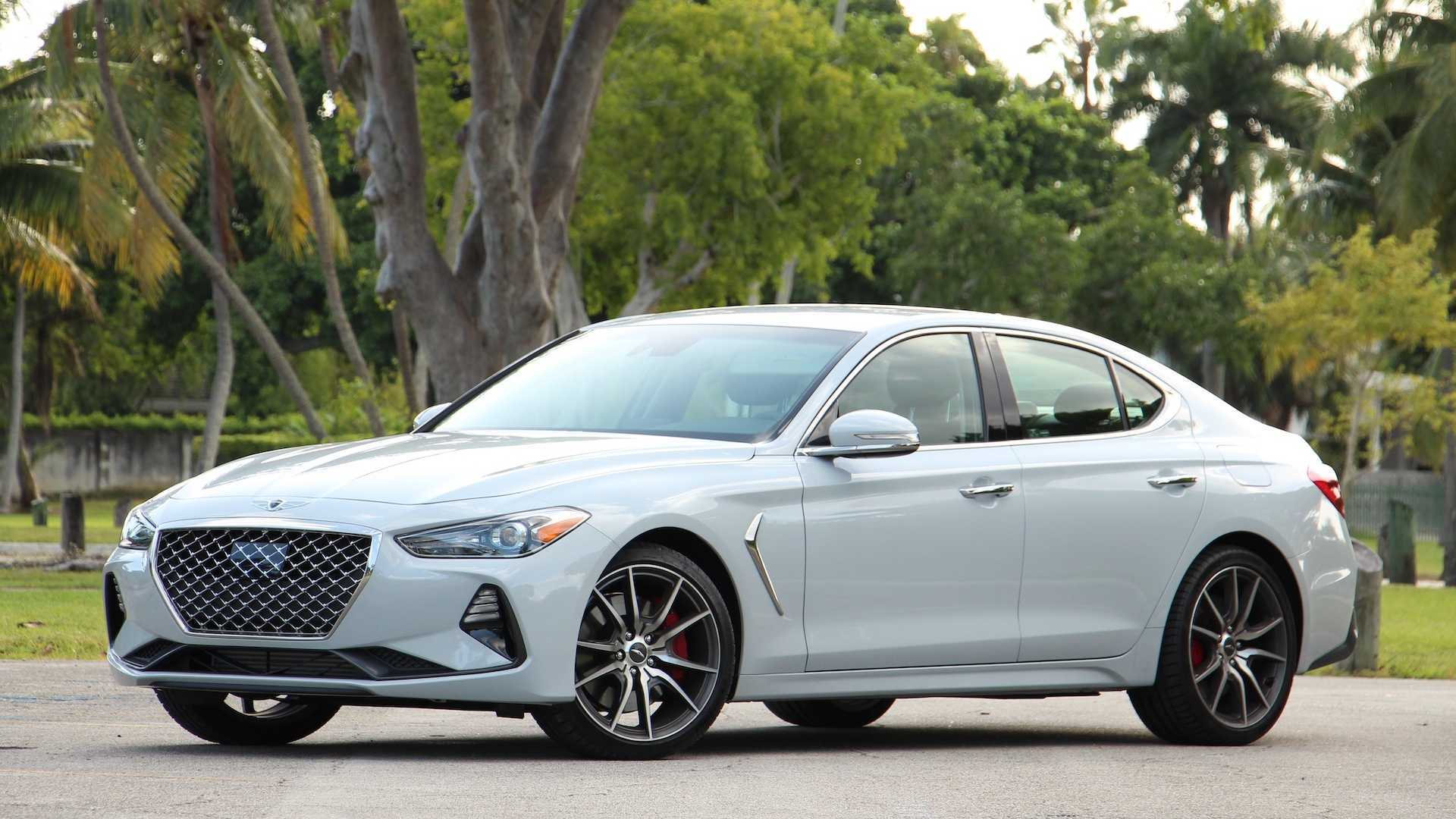
Seat adjustability in the G70 is extensive, accommodating drivers of different statures and ensuring ideal pedal reach and visibility. The combination of adjustable seating and ergonomic pedal placement ensures that comfort and control are never compromised.
Overall, the Genesis G70’s pedal layout exemplifies premium craftsmanship with a focus on driver comfort and engagement. For those seeking a luxury sedan that truly “gets it right” underfoot, the G70 offers an exceptional blend of ergonomics and performance.
5. Acura TLX (2023)
The Acura TLX offers a refined blend of luxury, technology, and driver-focused ergonomics. One of the key elements that sets the TLX apart is its thoughtfully designed pedal layout, which contributes to a comfortable and confident driving experience.
The brake and accelerator pedals in the TLX are spaced with precision to allow smooth transitions without any risk of accidental foot overlap.
Their placement supports natural foot movements, reducing ankle strain even during long commutes or spirited driving sessions. The pedals are also matched in height, facilitating fluid foot pivots and minimizing fatigue.
Acura has crafted the footwell to be spacious and free from obstructions, ensuring drivers of all sizes can place their feet comfortably. A well-positioned dead pedal adds to driver comfort by providing a resting spot that promotes better posture during longer drives.
The TLX’s adjustable seating further enhances pedal reach and comfort, allowing drivers to tailor their seating position for optimal ergonomics. Combined with Acura’s focus on driver engagement, the pedal layout helps the TLX deliver a premium and intuitive driving experience.
For drivers seeking a luxury sedan that excels in ergonomics without compromising on style or performance, the Acura TLX is a standout choice that truly nails the pedal layout.
Brake and accelerator pedal placement is a fundamental yet often overlooked aspect of vehicle design that directly impacts driving comfort, safety, and control.
Through exploring sedans with pedals placed too close and those that nail the layout, it becomes clear just how important this detail is for an optimal driving experience.
Vehicles with poorly spaced pedals—where the brake sits too close to the accelerator—can create challenges ranging from inadvertent pedal overlap to increased driver fatigue and even safety risks.
Such designs demand heightened attention and can cause discomfort during extended drives or in stop-and-go traffic.
The five sedans examined in the first section exemplify how cramped or awkward pedal layouts can detract from overall driving enjoyment and confidence, underscoring the importance of thoughtful ergonomics in vehicle design.
Conversely, sedans that nail pedal layout demonstrate the positive effects of driver-centric engineering. Generous but precise pedal spacing, consistent pedal heights, and spacious footwells contribute to a natural and intuitive footwork experience.
These elements reduce ankle strain, support quick pedal transitions, and foster confidence behind the wheel.
The vehicles highlighted in the second section—from the Honda Accord and Hyundai Sonata to the Genesis G70 and Subaru Legacy—showcase how thoughtful pedal design is integral to both comfort and control, enhancing every journey whether through daily commutes or spirited drives.
Ultimately, pedal placement is more than just a mechanical necessity; it’s a vital link in the driver-vehicle interface that can significantly influence safety and satisfaction.
While it may not always grab headlines like horsepower or infotainment features, the right pedal layout quietly transforms how a car feels to drive. For manufacturers, it’s a critical detail that rewards careful attention with loyal and confident drivers.
For buyers, understanding these nuances can guide smarter vehicle choices—prioritizing ergonomics and usability alongside style and performance.
Whether you’re navigating urban traffic or cruising the highway, a sedan with well-executed pedal placement is an investment in comfort, safety, and driving pleasure.
Also Read: 5 Cars That Feel Planted At 80 MPH And 5 That Float Or Wobble

